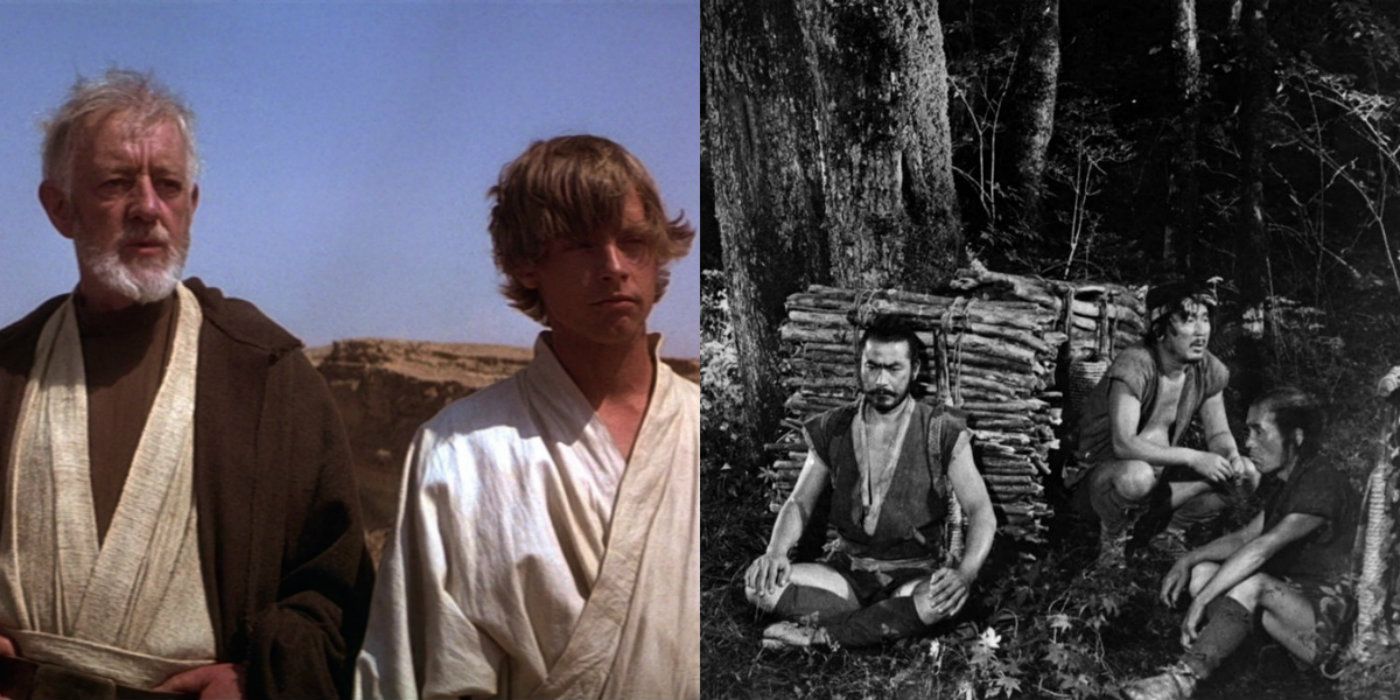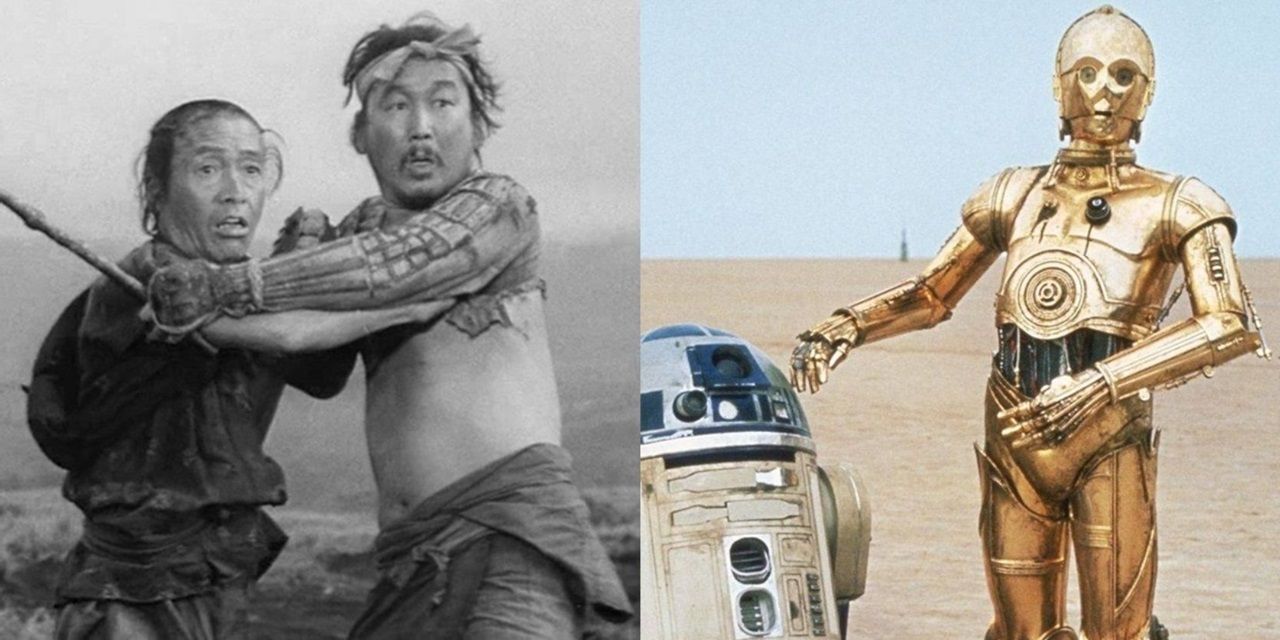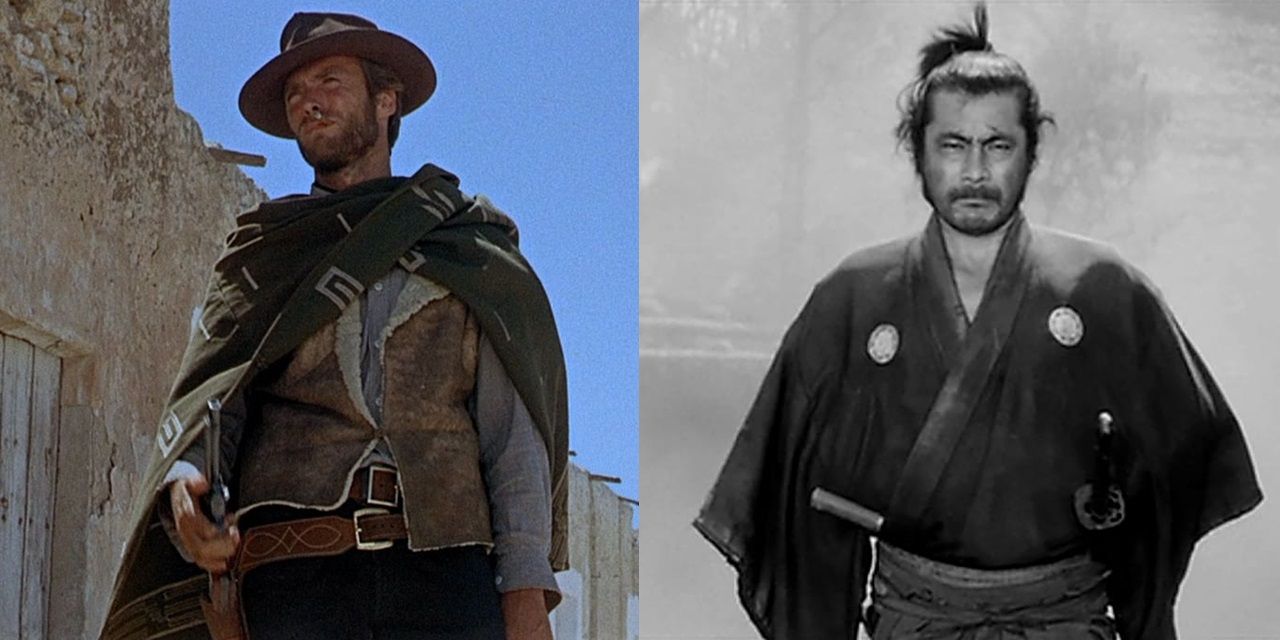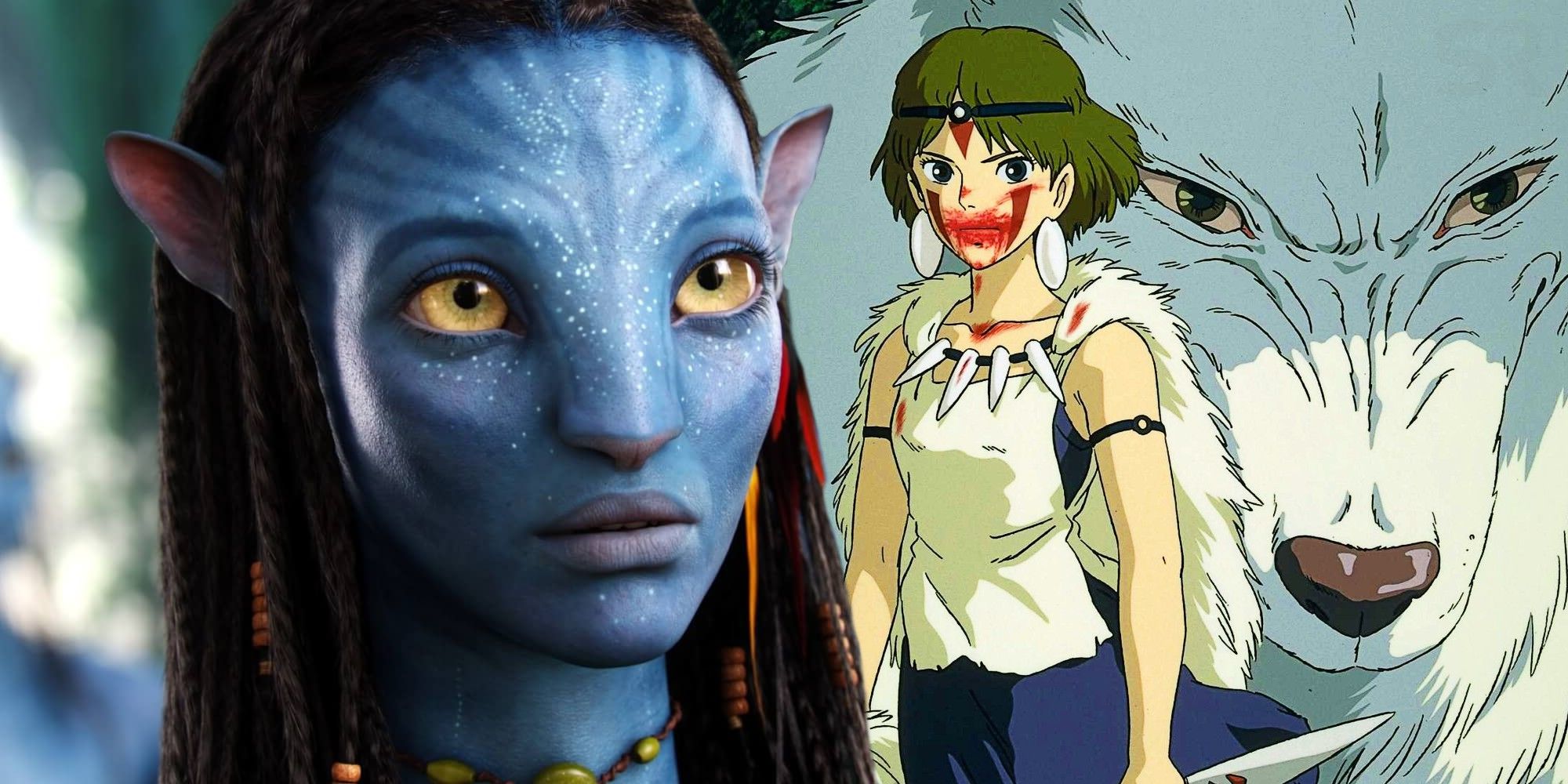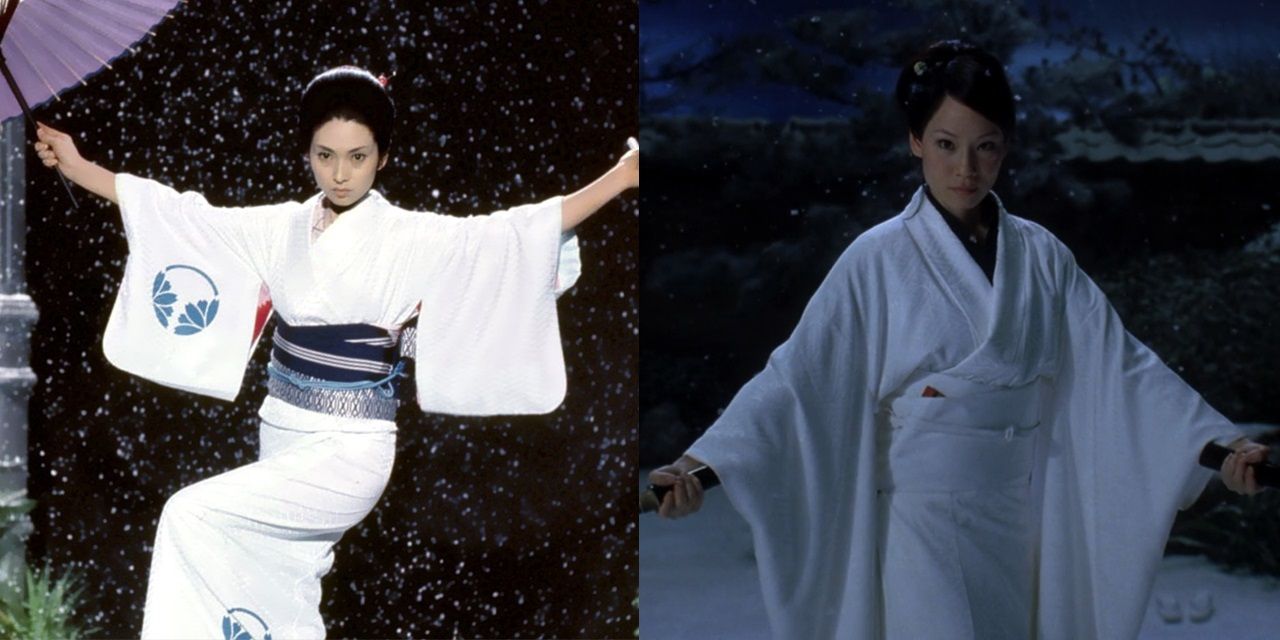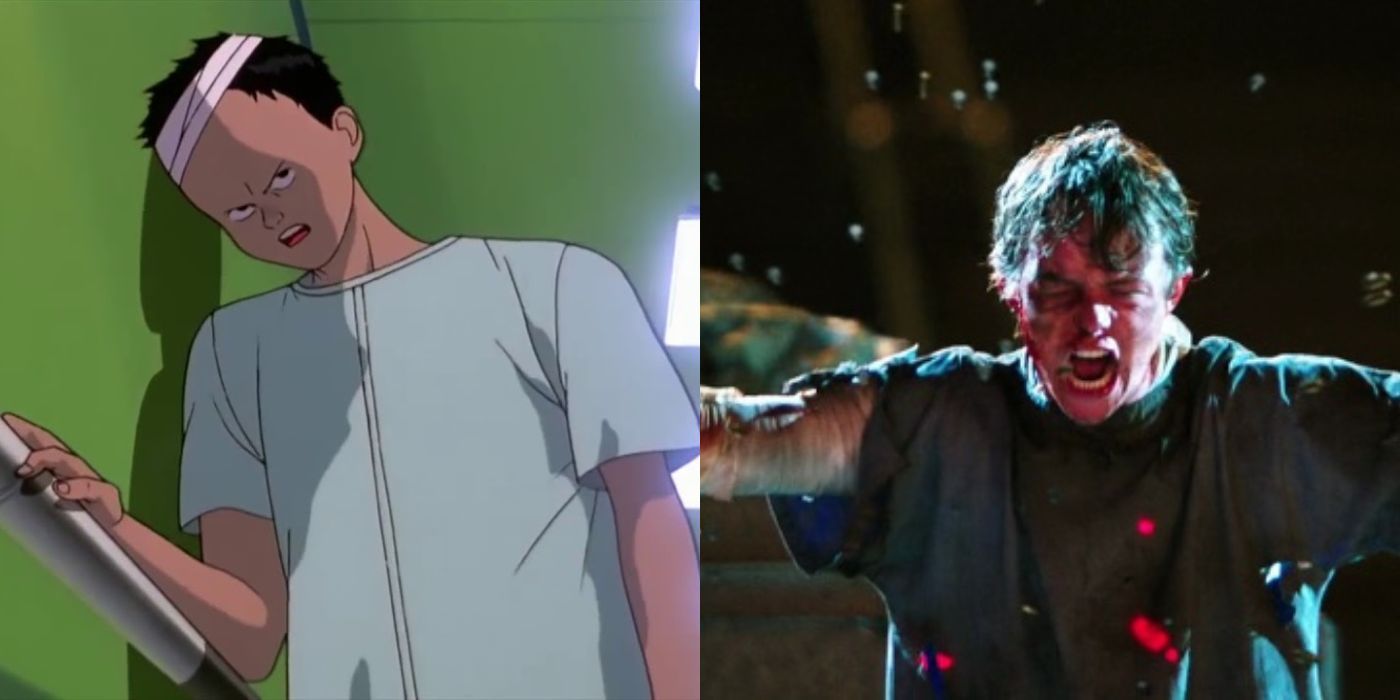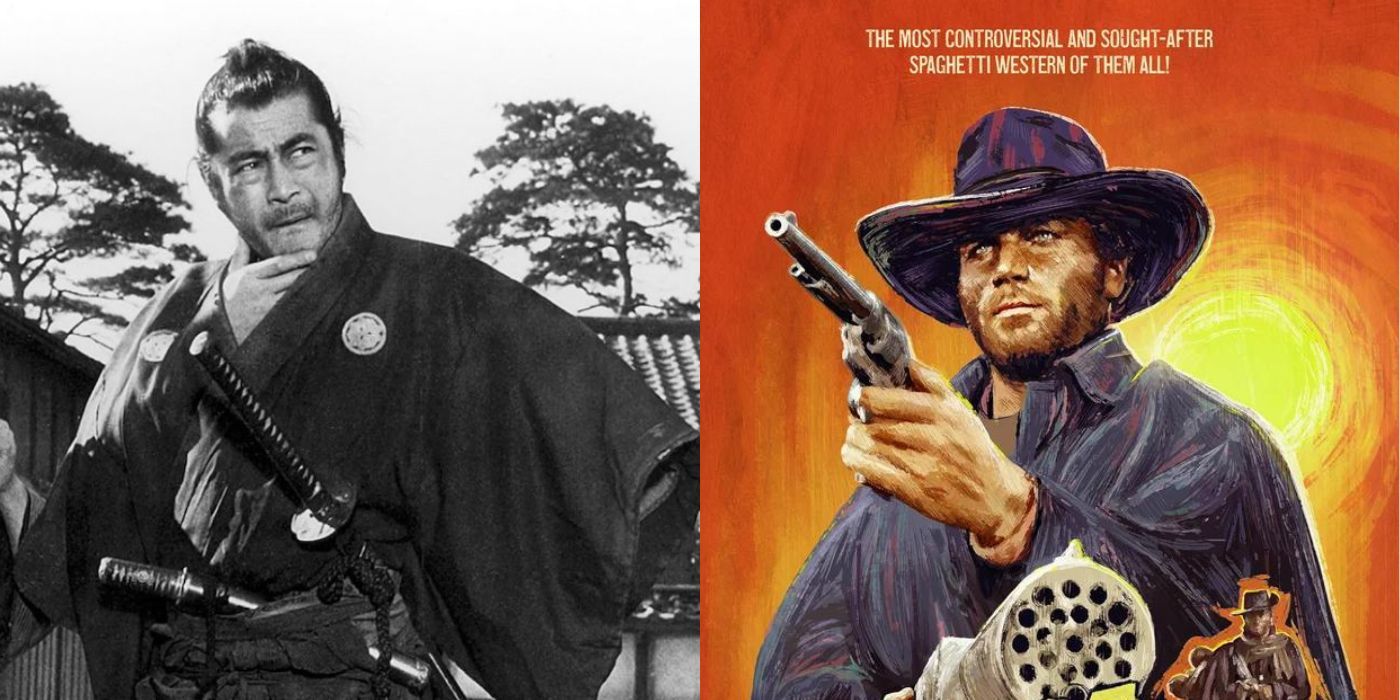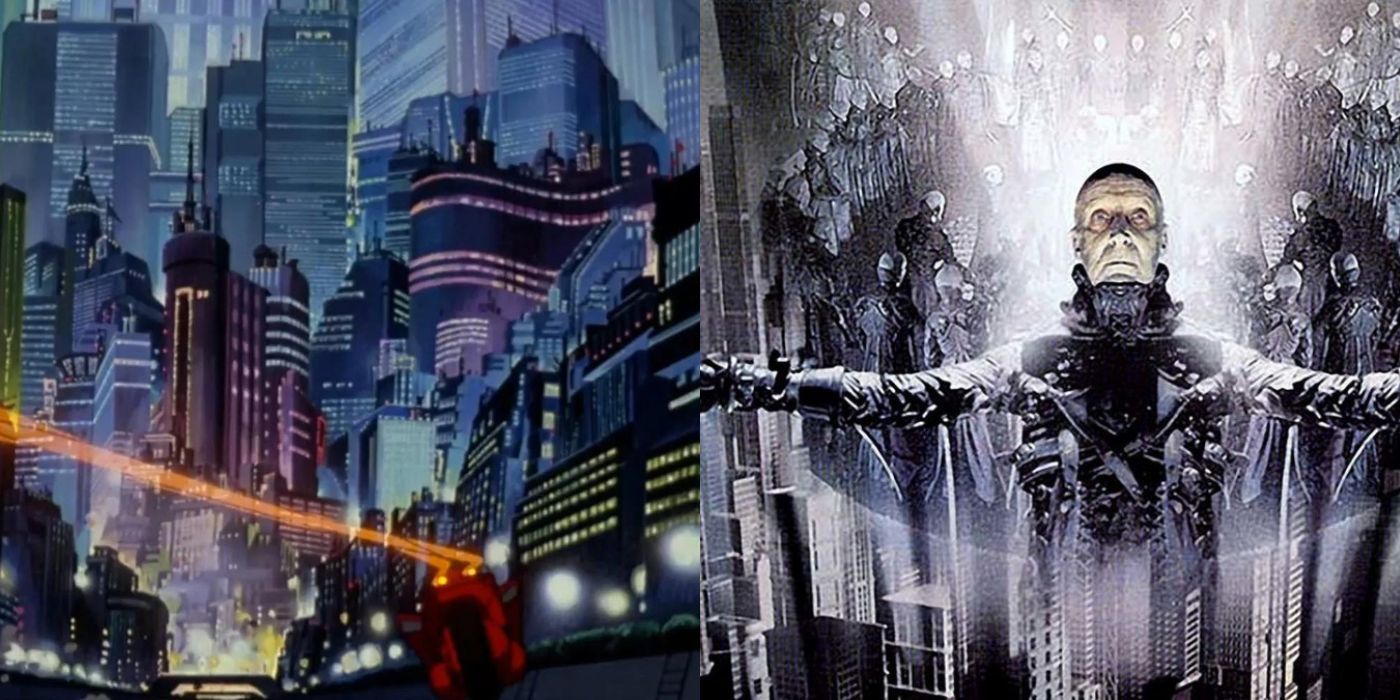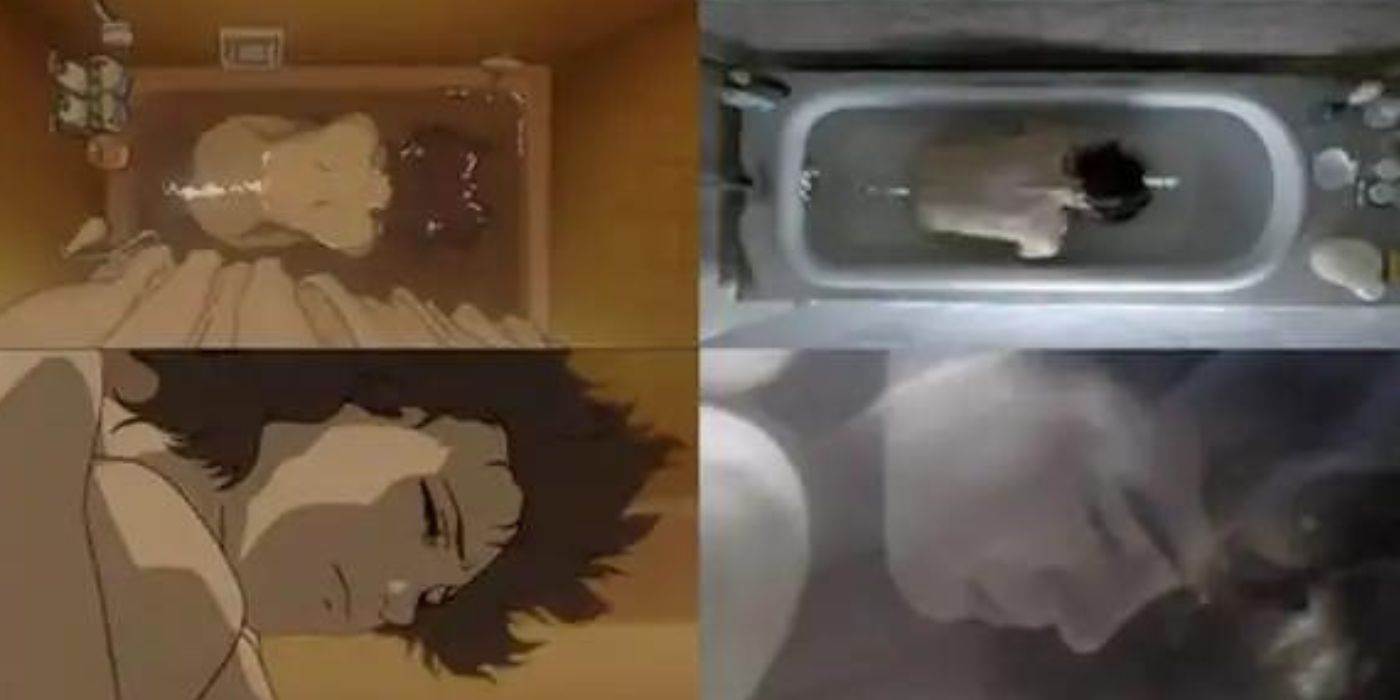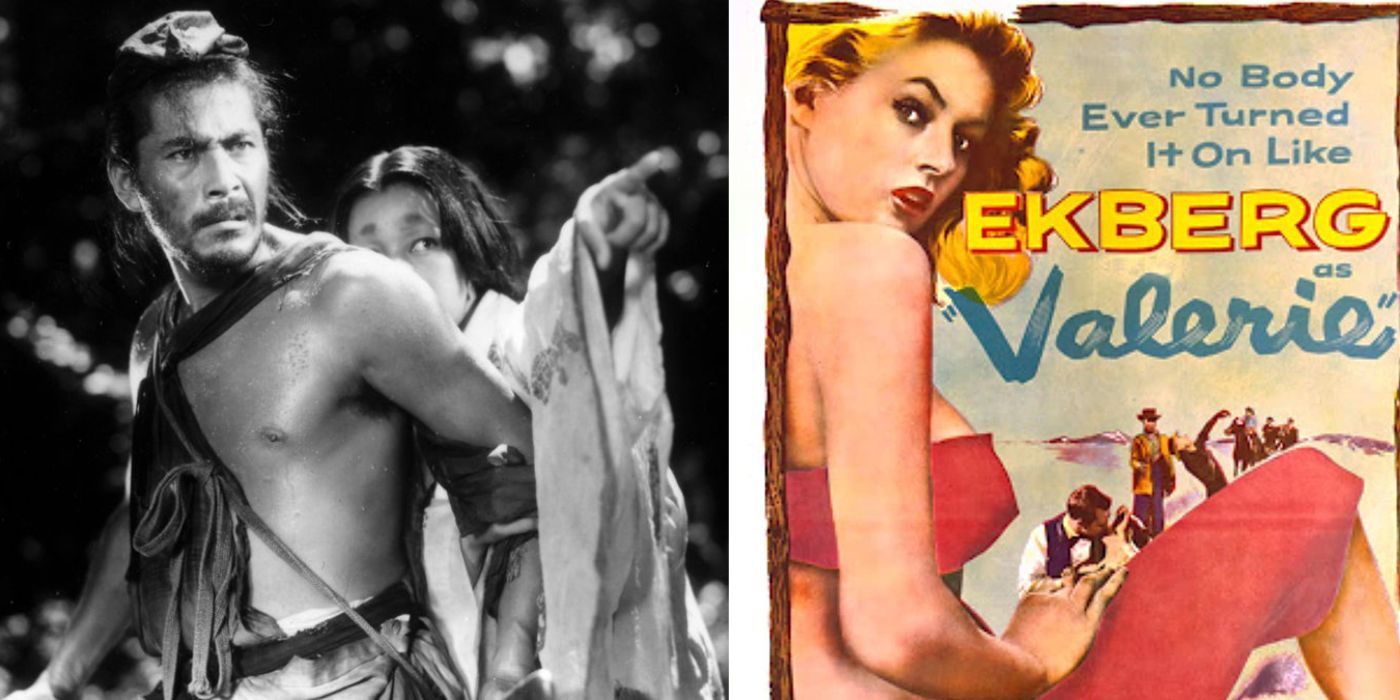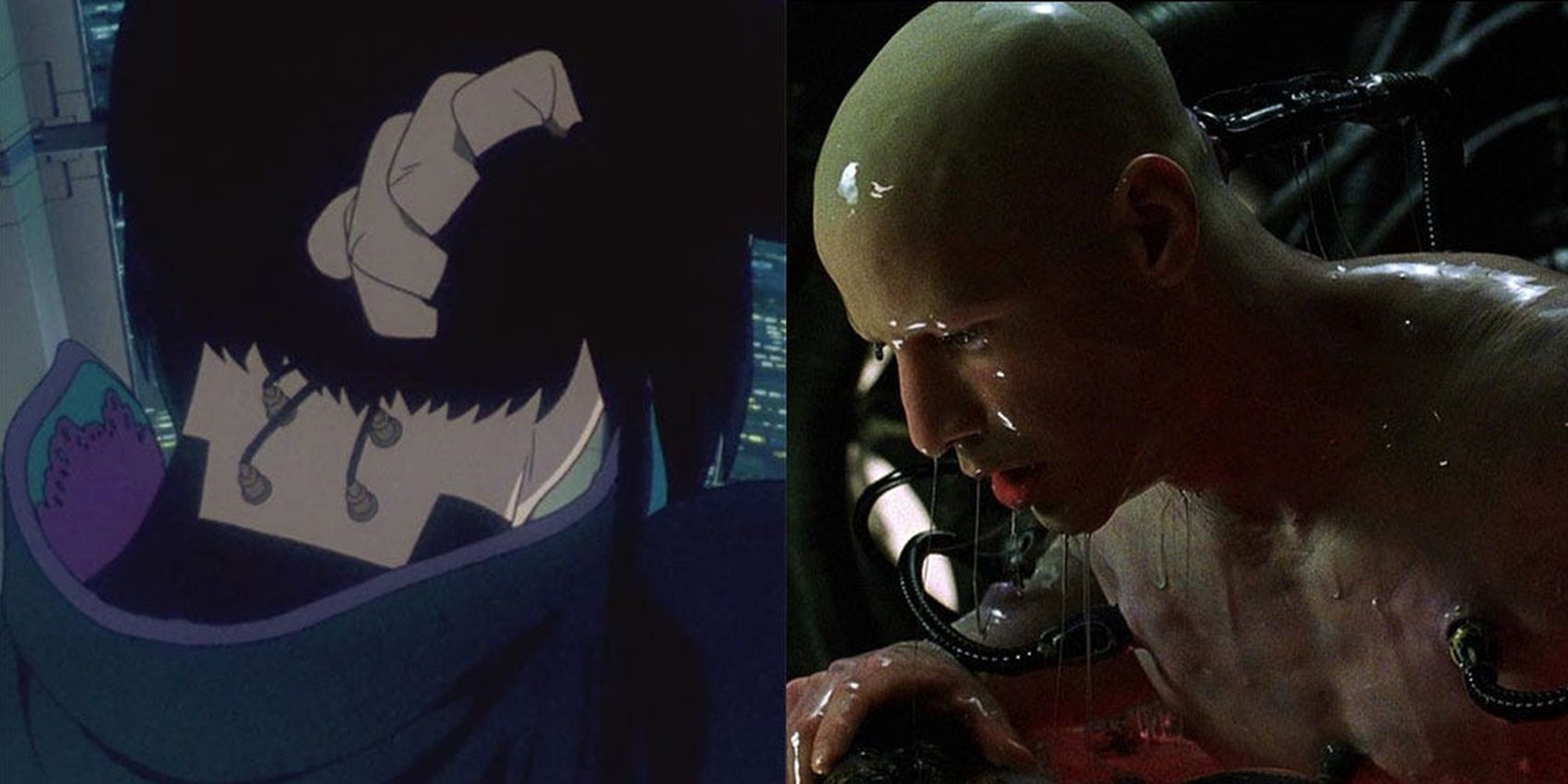The latest Star Wars miniseries, Obi-Wan Kenobi, draws parallels between the weary Jedi master and the lonely samurai archetype in Akira Kurosawa’s movies. This comparison wouldn’t be surprising given how George Lucas himself was inspired by Kurosawa’s Hidden Fortress while developing Star Wars. Japanese inspiration in Hollywood is clearly not a new phenomenon.
Japanese auteurs have been revolutionizing cinema for a long time, so much so that they have inspired several Hollywood blockbusters. Kurosawa is a recurring name with many of his samurai classics serving as the basis for sci-fi and action flicks. Later on, even anime movies found their way overseas.
Star Wars Is Inspired By Hidden Fortress
According to the 2007 book The Secret History of Star Wars by Michael Kaminski, George Lucas has attributed Hidden Fortress as a direct inspiration for Star Wars. Considered to be one of the best Akira Kurosawa movies, it deals with the adventure of two peasants escorting a man and a woman (who are revealed to be a general and a princess respectively) has clear character parallels with Obi-Wan Kenobi and Leia Organa who are the “general” and the “princess”. As for the peasants, they are replaced by R2-D2 and C-3PO. The villain is also comparable to Darth Vader.
Lucas’ first draft resembled the movie even more as it didn’t include Luke Skywalker and Han Solo, both of whom were original characters. Otherwise, even Kenobi’s code of conduct and the Jedi Order’s rules seem to have been inspired from the samurai code of honor.
A Fistful Of Dollars Is Inspired By Yojimbo
The first chapter of Sergio Leone’s "Dollars" trilogy might have revolutionized the world of Spaghetti Westerns but its uncanny resemblances with Yojimbo cannot be ignored. Both movies deal with a solitary hero who shows up in a sleepy town riddled with rival crime lords. Due to the similarities with the plot and the characterization of the hero, Yojimbo’s production studio Toho went on to sue the makers of A Fistful of Dollars for copyright infringement.
According to Flavorwire, film historian Stephen Prince (who also wrote the book The Warrior’s Camera: The Cinema of Akira Kurosawa) said that Leone was a huge fan of Yojimbo and following the Toho lawsuit, Leone even received a letter from Kurosawa in which the Japanese director said “I’ve seen your movie. It’s a very good movie. Unfortunately, it’s my movie.”
Avatar Is Inspired By Princess Mononoke
James Cameron’s mega hit Avatar is a sci-fi action flick on the surface but it also deals with introspective themes on environmentalism and the destructive impact of humanity on nature. For this core philosophy, Cameron has admitted to the Studio Ghibli movie Princess Mononoke as a direct inspiration.
Directed by Ghibli’s founder and legendary animator Hayao Miyazaki, Princess Mononoke similarly dealt with the gods of the forest (reminiscent of the Na’avi people in Avatar) and their clashes with humans. According to an interview with the Japanese newspaper Saneki Shimbun, not only does Cameron admit to being inspired by Princess Mononoke but he added that the floating islands of Pandora are also inspired by Miyazaki’s Castle in the Sky.
Kill Bill Vol. 1 Is Inspired By Lady Snowblood
Quentin Tarantino’s movies are praised but also criticized for their diverse foreign influences. Given the samurai and kung-fu overtones of the Kill Bill duology, some Japanese inspirations are bound to make way. While Tarantino has never openly admitted to being influenced by Lady Snowblood, cinephiles and film journalists have drawn multiple parallels over the years.
In a detailed analysis for The Guardian, Steve Rose broke down the general premise of Lady Snowblood that dealt with a woman seeking violent revenge on the gang members who wronged her. Additionally, the Japanese thriller also incorporates some illustrations for scenes that were too expensive to film. Kill Bill Vol. 1 similarly made use of anime sequences as segues between the narrative.
Chronicle Is Inspired By Akira
Akira is a cyberpunk sci-fi masterpiece with influential themes of violent loss of innocence and dystopian cities. As a reckless biker gang member gets involved in an unauthorized military experiment, he channels powers that are beyond his control.
Dane DeHaan's antihero in Chronicle can be seen as the Hollywood version of Tetsuo Shima as he is unable to control the superpowers bestowed upon him. Using his abilities to wreak havoc and channel his pent-up frustration, both movies end with a similar character transformation, both in the physical and mental sense. Chronicle director Josh Trank has cited Akira as an active influence on his lead character. As he told Gizmodo, both stories tend to capture teenage angst and the feeling of "fighting back".
Django Is Inspired By Yojimbo
Following the success of A Fistful of Dollars, several of the best low-budget spaghetti Westerns propped up leading to some cult hits like Django. While the movie gained its own fair share of controversy due to violence that was considered extreme at that time, the Franco Nero-starrer also shared plot similarities with A Fistful of Dollars which itself seemed like a frame-by-frame remake of Yojimbo.
Today, there is wide acceptance among cinephiles that Django is just one of the many unofficial remakes of Yojimbo. According to The Spaghetti Western Database, Django deviates more from Akira Kurosawa's script than A Fistful of Dollars, but the character of Django himself is closer to the masterless samurai from Yojimbo.
Dark City Is Inspired By Akira
Be it the iconic "bike slide" or its neon-heavy visual aesthetic, several aspects of Akira have gone on to inspire box-office hits as well as underrated cult favorites like Dark City. In the latter Australian sci-fi film, an amnesiac murder suspect encounters a mysterious cult-like organization while exploring a dystopian urban jungle.
The dystopian chaos in both movies involves a "man-on-the-run" premise and a climactic battle that is closely similar to the anime classic. Dark City writer and director Alex Proyas has gone on to say in a 2006 Internet forum that he was indeed inspired by Akira for the ending.
Requiem For A Dream Is Inspired By Perfect Blue
Satoshi Kon's landmark anime movie Perfect Blue is a psychological thriller that explores the breakdown of an actress who is pushed to the limits by a stalker and her own inner demons. A visually striking moment, in particular, is the bathtub scene that finds her submerged underwater and releasing her frustration.
A frame-to-frame tribute can be seen in Darren Aronofsky's Requiem For A Dream. As Jennifer Connelly's character deals with her own addiction issues and toxic relationship, she too needs a moment to unwind in the bathtub. However, while some might see this as a homage, Kon has been critical. As Far Out details a series of Kon's 2007 lectures, the Japanese director feels that Aronofsky's movie "copies" Perfect Blue's scenes and themes.
Valerie Is Inspired By Rashomon
With one story told from multiple characters' perspectives, the Akira Kurosawa classic Yojimbo revolutionized the way scripts could be written. In fact, the "Rashomon style" of storytelling can now be found in several movies that attempt to recount multiple points of view.
Valerie is one such case that is believed to be inspired by Rashomon in terms of its script. The Western describes a man killing his wife and her parents and several narratives attempt to piece together what happened. According to renowned media historian Hal Erickson (in AllMovie), "Clearly inspired by Rashomon, the film offers contradictory flashbacks during a lengthy trial."
The Matrix Is Inspired By Ghost In The Shell
The sci-fi anime classic Ghost in the Shell addresses several concerns within a futuristic society delving into surveillance and cybernetic control. As for 1999's The Matrix. the writer-director duo The Wachowskis have never shied away from their Japanese influences citing movies like Princess Mononoke and Ghost In The Shell.
The narrative aside, even visual elements like the numerical code designs on screen and the characters plugging in devices into the nape of their neck are also strikingly similar. Vox points out such commonalities claiming that The Wachowskis even showed the anime to producer Joel Silver while filming.

